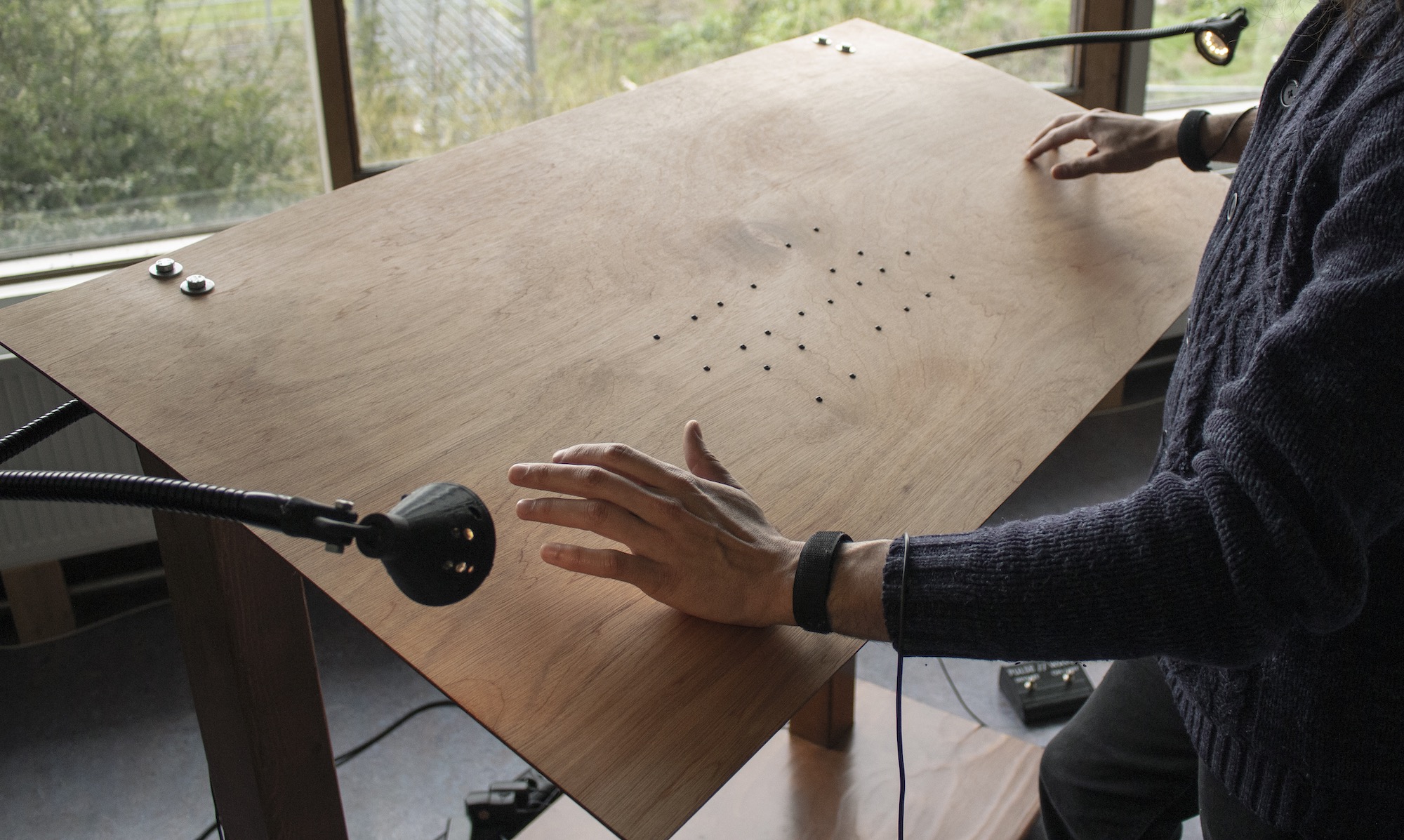Ephemerides
June Kuhn experiments with touch sensing and microtonality
In this post June Kuhn share a microtonal instrument they created which uses brass rods and touch sensing using our Trill Craft sensor. The instrument creates a playground for microtonality where the performer can explore pitch ratios and harmony. Over to June.
During a residency at Goldsmiths, University of London, I built a microtonal instrument to explore pitch ratios and relationships outside equal temperament. Spanning the worlds of physical computing, interface design, sculpture, and c++ programming on the Bela platform, this project outlines a new method to explore improvisation in microtonality.
Constructing ratios of pitches
In the same way early astronomers used calculation tables to explore the trajectories of celestial bodies, this instrument explores microtonality in which the performer manually constructs ratios of pitches and their corresponding placement on the keyboard. Equal temperament, the way most instruments are designed, is only one potential destination on a near limitless plane of frequency manipulations. The rawness and freedom of this method of music-making is reflected in the instrument itself, with bare brass rods as points of contacts on a live circuit. The Trill Craft capacitive sensor enables delicate touch to control an unpredictable sound world.

Without displays or predetermined theory on what note should go where, the instrumentalist is free to explore a multidimensional plane of mathematical harmony from a set of tuning algorithms. Sound and listening are championed as the beginning, middle, and end of microtonality improvisation. Most music composition strategies maintain a single temperament within one performance. In this instrument music theory is the last step of the feedback loop; after playing, listening, and interacting with different methods of constructing chords and melodies.
Tuning Algorithms
Various different microtonal tunings are possible on the instrument. Taking lead from mannfishh (a composer of microtonal music and a big inspiration for this instrument) I created algorithms for logarithmic tuning, arithmetic division tuning, and ratio division tuning. If you are interested in learning more about these tuning methods I highly recommend mannfishh’s work.
So far so complicated, however when playing the instrument you don’t have to think about these algorithms, you can just explore their musical effects. I’ve found musicality in switching between the algorithms, as the contrast is so intense that it can be used to move into another section.
The instrument itself
The programming behind the synth itself is pretty straightforward, with basic options to choose the base frequency (what the 1 in any ratio actually corresponds to in terms of frequency), glide amount, waveform selection, biquad filtering, and ADSR controls. This was coded in c++ and run on a Bela Mini.

When it came to the physical construction of the instrument there were some limitation with the method I chose to use. By soldering brass directly on to the Trill Craft sensor I could only fit 14 brass rods on the keyboard before it became to fragile to work with. The Trill Craft has 30 sensors total, so there is potential for creating bigger scales with bigger keyboards. The whole instrument is housed in a 3D printed enclosure.
About June Kuhn

June Kuhn is a neuroqueer music technologist, and they like to make things and perform using experimental technology and techniques. As Saxodrone, they perform in London, mostly in queer and experimental music settings, combining ‘power ambient’ saxophone and spoken word. As Trampbunny, they explore audiovisual computer programming, perform live code with Hydra or Tidalcycles, or craft generative art. In general, they focus on how to transform complex technologies, including algorithms, mathematics, and experimental mediums, to be more collaborative with other artists.




